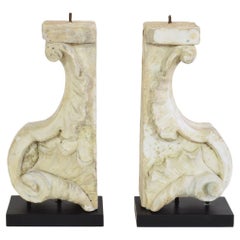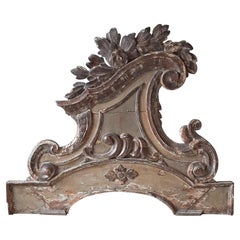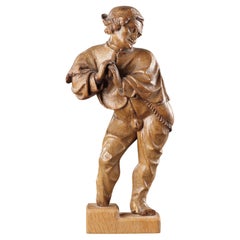18th Century and Earlier Sculptures
Italian Baroque Antique 18th Century and Earlier Sculptures
Marble
Afghan Adam Style Antique 18th Century and Earlier Sculptures
Rock Crystal
Italian Rococo Antique 18th Century and Earlier Sculptures
Pine
French Antique 18th Century and Earlier Sculptures
Limestone
German Antique 18th Century and Earlier Sculptures
Bronze
Dutch Antique 18th Century and Earlier Sculptures
Wood
Spanish Renaissance Antique 18th Century and Earlier Sculptures
Wood
English Antique 18th Century and Earlier Sculptures
Marble
English Medieval Antique 18th Century and Earlier Sculptures
Oak
French Louis XVI Antique 18th Century and Earlier Sculptures
Bronze
Chinese Qing Antique 18th Century and Earlier Sculptures
Hardwood
Antique 18th Century and Earlier Sculptures
Bronze
Egyptian Egyptian Antique 18th Century and Earlier Sculptures
Limestone
Uruguayan Antique 18th Century and Earlier Sculptures
Agate, Amethyst, Quartz
French Louis XV Antique 18th Century and Earlier Sculptures
Stone
German Rococo Antique 18th Century and Earlier Sculptures
Porcelain
Antique 18th Century and Earlier Sculptures
Fruitwood
Antique 18th Century and Earlier Sculptures
Wood
Italian Antique 18th Century and Earlier Sculptures
Wood
Italian Folk Art Antique 18th Century and Earlier Sculptures
Wood
Italian Baroque Antique 18th Century and Earlier Sculptures
Wood
Portuguese Baroque Antique 18th Century and Earlier Sculptures
Wood
Italian Organic Modern Antique 18th Century and Earlier Sculptures
Rock Crystal, Gold Leaf
Italian Antique 18th Century and Earlier Sculptures
Stucco
Thai Other Antique 18th Century and Earlier Sculptures
Ceramic
English Neoclassical Antique 18th Century and Earlier Sculptures
Stoneware
Italian Rustic Antique 18th Century and Earlier Sculptures
Wood
Neoclassical Antique 18th Century and Earlier Sculptures
Concrete, Marble
French Gothic Antique 18th Century and Earlier Sculptures
Wood
Malagasy Antique 18th Century and Earlier Sculptures
Shell
American Antique 18th Century and Earlier Sculptures
Stone
English Rococo Antique 18th Century and Earlier Sculptures
Porcelain
Italian Louis XV Antique 18th Century and Earlier Sculptures
Fruitwood
Italian Baroque Antique 18th Century and Earlier Sculptures
Wood, Lacquer
English Antique 18th Century and Earlier Sculptures
Stone
Antique 18th Century and Earlier Sculptures
Pottery
Malagasy Antique 18th Century and Earlier Sculptures
Precious Stone
Italian Baroque Antique 18th Century and Earlier Sculptures
Wood
French Baroque Antique 18th Century and Earlier Sculptures
Wood
English Antique 18th Century and Earlier Sculptures
Copper
Peruvian Antique 18th Century and Earlier Sculptures
Pyrite
Italian Antique 18th Century and Earlier Sculptures
Glass, Wood
Italian Baroque Antique 18th Century and Earlier Sculptures
Wood
Italian Renaissance Antique 18th Century and Earlier Sculptures
Carrara Marble
Antique 18th Century and Earlier Sculptures
Wood
French Baroque Antique 18th Century and Earlier Sculptures
Oak
French Baroque Antique 18th Century and Earlier Sculptures
Wood
Chinese Chinese Export Antique 18th Century and Earlier Sculptures
Porcelain
European Antique 18th Century and Earlier Sculptures
Limestone
French Renaissance Antique 18th Century and Earlier Sculptures
Boxwood
Norwegian Antique 18th Century and Earlier Sculptures
Natural Fiber
Central American Pre-Columbian Antique 18th Century and Earlier Sculptures
Pottery
Antique 18th Century and Earlier Sculptures
Marble
Italian Neoclassical Revival Antique 18th Century and Earlier Sculptures
Pottery
Italian Baroque Antique 18th Century and Earlier Sculptures
Gold Leaf
Italian Antique 18th Century and Earlier Sculptures
Marble, Bronze
Italian Baroque Antique 18th Century and Earlier Sculptures
Giltwood
Egyptian Egyptian Antique 18th Century and Earlier Sculptures
Fruitwood, Hardwood
Read More
These Soft Sculptures Are Childhood Imaginary Friends Come to Life
Miami artist and designer Gabriela Noelle’s fantastical creations appeal to the Peter Pan in all of us.
Salvatori Commissioned Several Famous Architects to Create Miniature Homes in Stone
Gabriele Salvatori explains how the COVID lockdowns inspired his design company's latest collection, the Village.
Christopher Norman Is Turning the Cast-Off Urban Trees of Los Angeles into Art
With a World War II–era milling machine, the California artist crafts poetic, sculptural furniture pieces.
These Human-Size Ceramic Hares Evoke Serious Emotions
Swedish artist Margit Brundin's large anthropomorphic animal sculptures are on view for the first time in the United States at Dienst + Dotter Antikviteter, in New York.
Tour the Wabi-Sabi New York Apartment of Andrianna Shamaris
As her sun-filled home reveals, the furniture maker and dealer puts a contemporary spin on antiques from around the globe.
Vicente Wolf’s Tips for Finding — and Living with — Eastern Treasures
The A-list designer shares his expertise on choosing authentic objects and displaying them with style.
Rodrigo Rivero Lake’s Mexico City Showroom Is a Museum-Worthy Trove of Spanish Colonial and Asian Antiques
The dealer and curator has spent the past 50 years amassing a collection of exceptional art, furniture and architectural elements that trace the cultural influence of the Spanish empire from Europe to the Americas and beyond.
Misha Kahn Is the Millennial Maker for Our Anxious Times
The Study catches up with the Brooklyn designer as he prepares for his second solo show at Friedman Benda.




